Whether stirring up the soil in a pot or out in the garden, you will be using a garden cultivator. This task can feel a little daunting if you have a ratchet cultivator and are unsure how to use it. To help you with this, we have done the research and will teach you how to use one in this post!
Manual ratchet cultivators or pronged cultivators are relatively easy to use. You will notice four key parts in a ratchet cultivator: the handles, body, footplate, and prongs. Here is a step-by-step guide on how to use one:
- Firmly hold the cultivator by the handles
- Position the cultivator ratchet-side down over tilled soil
- Press one foot onto the footplate
- Step down to push the prongs into the soil
- Turn the handle left and right to loosen up the soil
Using a ratchet cultivator on tilled soil should be a fast and easy job. If you are having trouble cultivating or moving the soil around, it may be due to hard, tightly packed soil or a faulty cultivator. Keep reading to learn more about this tool and how to use it in your garden!
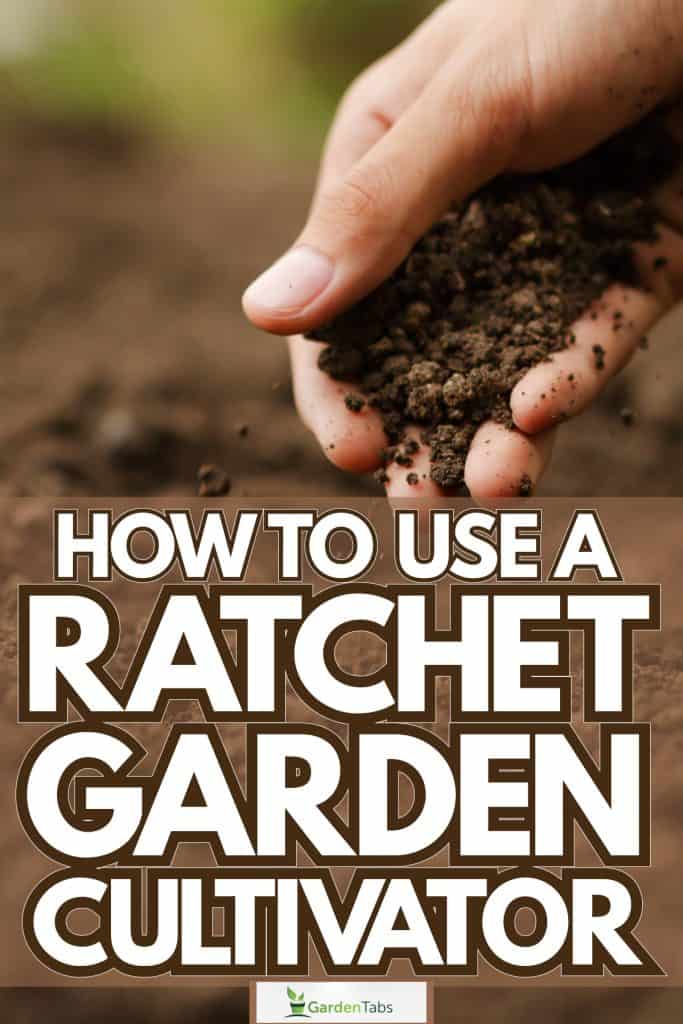
What Is A Ratchet Cultivator Used For?
Ratchet cultivators are typically handheld cultivators that have a ratchet mechanism. This ratchet mechanism cuts into dirt. It works with a spinning motion to loosen dirt up.
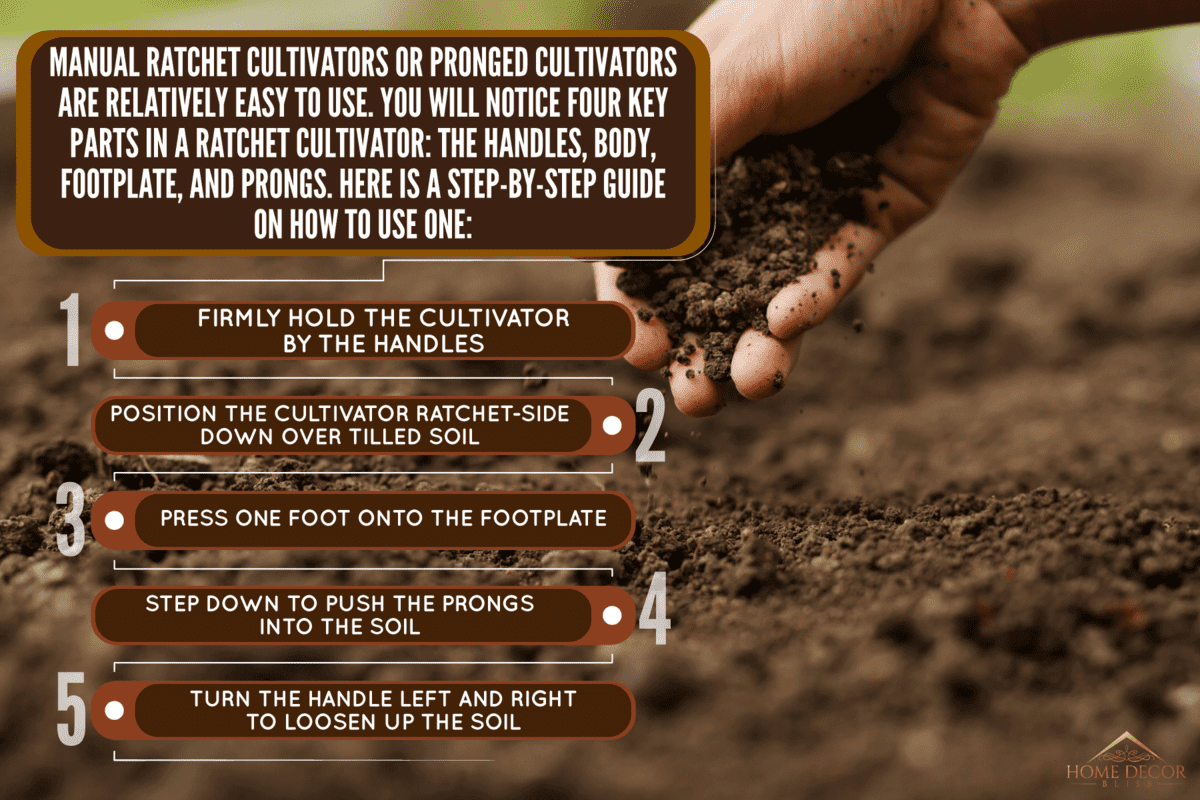
On farms, tractors hook up to cultivators to get through large swaths of land. Individual electric cultivators can also be used.
Smaller, handheld cultivators are perfect for your home and garden! You can use your ratchet cultivator on your garden bed or in pots and planters to prepare your soil.
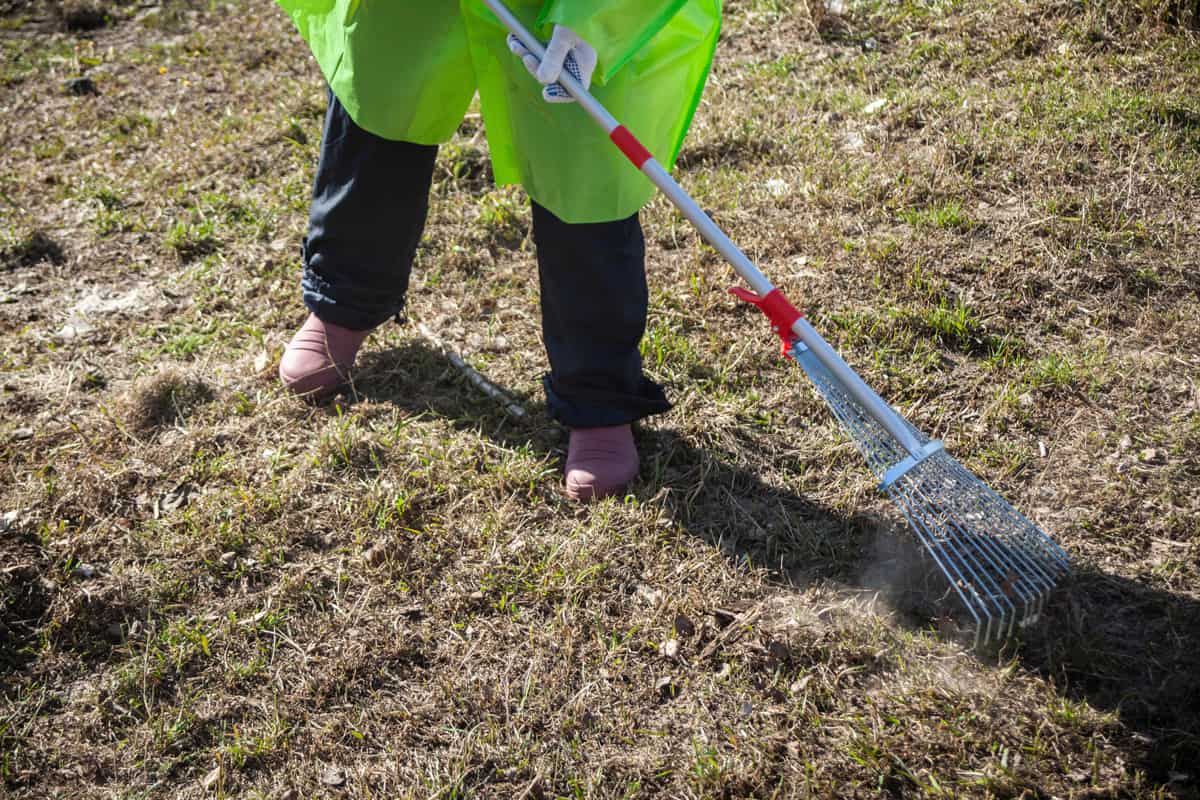
You also can use a ratchet cultivator to rip out weeds. Simply operate the cultivator over weeds and unwanted plants following the same steps mentioned above. With enough strength, you can take weeds out by the roots and prepare your soil for your actual plants.
As already mentioned, you might have trouble cultivating hardened or packed soil. A cultivator is not built for and is not strong enough to take on this soil since its function is only as secondary tillage.
This means you should prepare the soil with a different tool before cultivating. You will need to use a tiller for this step, which we will explain below.
Click here to see this Garden Weasel cultivator on Amazon.
Do I Need A Tiller Or A Cultivator?
Ideally, having both the tiller and the cultivator in your garden shed is helpful. First, use the tiller to unpack compact soil into looser dirt. Plants cannot grow when the soil is too tightly packed, so this step is necessary.
Cultivators, on the other hand, loosen and level already tilled soil. You cannot cultivate without tilling first. Cultivating only loosens just a small top layer of soil. You will find it challenging to work around the tough soil underneath.
You can get electric or manual versions of tillers and cultivators. For smaller plots of land, you can make do with manual ones. We will go into the pros and cons of electric and manual tillers and cultivators in the following few sections if you want to learn more!
Can I Use A Cultivator To Till My Garden?
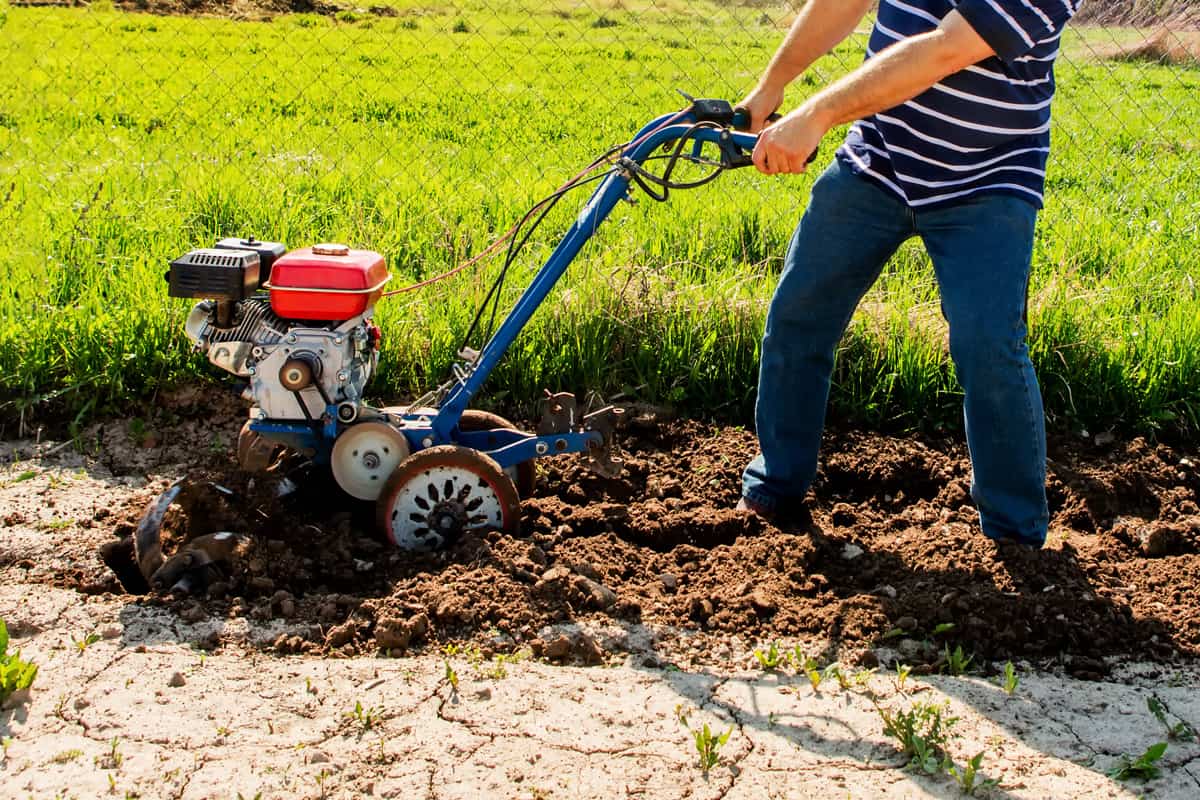
For new ground that has not been used before, you must use a tiller to till the soil. You might want to use a cultivator, but the tines are not made for breaking up packed-up dirt. You could risk damaging your cultivator or even causing injury to yourself.
Most cultivators can go five inches deep into the topsoil. The depth a cultivator can reach also depends on how long the tines are. They are perfect for mixing up the soil of an already established garden but not quite heavy-duty enough to act as a tiller substitute.
On the other hand, tillers can dig down a depth of six to eight inches, depending on the type. Though not much deeper than what a cultivator can do, tillers are best suited to do a rough loosening of the soil.
Both cultivators and tillers cannot work against rocks or tough debris that get in the way. Clear out anything that is not soil to avoid accidentally damaging your tools.
Note that though both can be used to get rid of weeds, cultivators cannot pull out grass as easily.
How To Maintain Your Cultivator
Using a garden cultivator for hard garden work does not mean you can neglect it. Like any other tool, you must regularly clean and maintain your garden cultivator.
Maintaining your cultivator extends its life and the time you can use it. It also ensures the cultivator will continue to work correctly. A faulty cultivator will not be as effective and could be more effort for you to work with.
Here are some ways you can maintain your cultivator:
- Only use it over tilled or soft and moist (not wet) soil
- Clean the tines before and after using
- Follow the steps for using your cultivator correctly
- Store your cultivator in a secure place when not in use
Precautions To Remember
Using a ratchet cultivator can cause physical strain to your body. If you misuse it, you risk injuring yourself or hurting those in your surroundings. Of course, you should protect yourself and your surroundings when operating the device.
One final thing to note is that soil and debris can fly up while you're using your cultivator. You will want to keep yourself safe from any dirt that could get into your eyes. You should wear safety goggles while using a garden cultivator or tiller.
Should I Use An Electric Or Manual Cultivator?
If you decide to expand your gardening plot, you can choose to upgrade to an electric cultivator.
As the name suggests, electric cultivators are powered through a cord or batteries. You can also get gas-powered cultivators. These are bigger and work faster than manual cultivators.
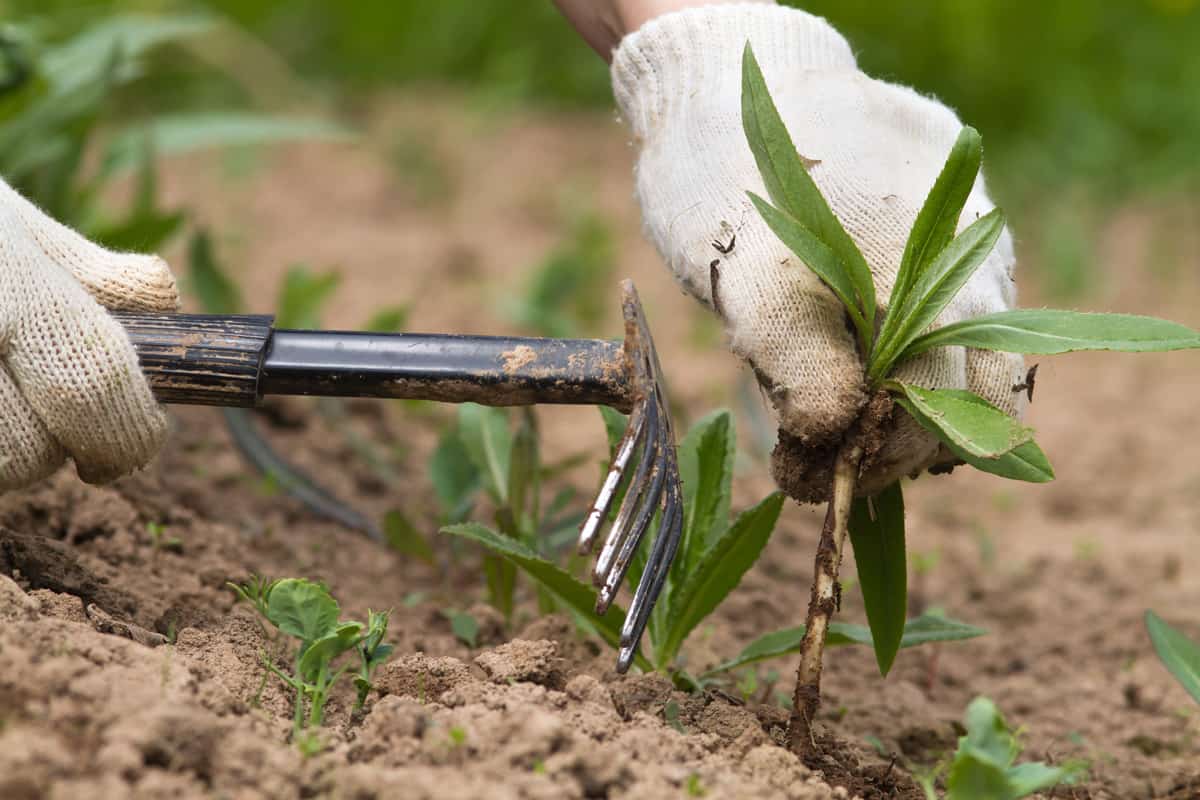
You operate an electric cultivator by pushing it along your garden plot, like a lawnmower. As you move across the plot, the blades spin around quickly to cultivate the soil.
At times, you will notice that the terms "cultivator" and "tiller" are used interchangeably. This makes it a little tough to shop for one or the other, so do careful research when buying online.
If you buy an electric cultivator in person, clarify with the store about the item you are purchasing. You can choose an electric cultivator based on its speed. In this regard, you may encounter rototillers or electric tillers.
Both electric cultivators and rototillers have quickly spinning tines that work on the soil. Depending on the revolutions per minute (RPM), you can have it go faster or slower.
Click here to see this battery-powered tiller cultivator on Amazon.
One final thing to note about electric cultivators is the extra steps you should take to maintain one. Besides cleaning, you should remember to oil your electric cultivator. Mechanical issues and damage may crop up occasionally, which can be tougher to repair.
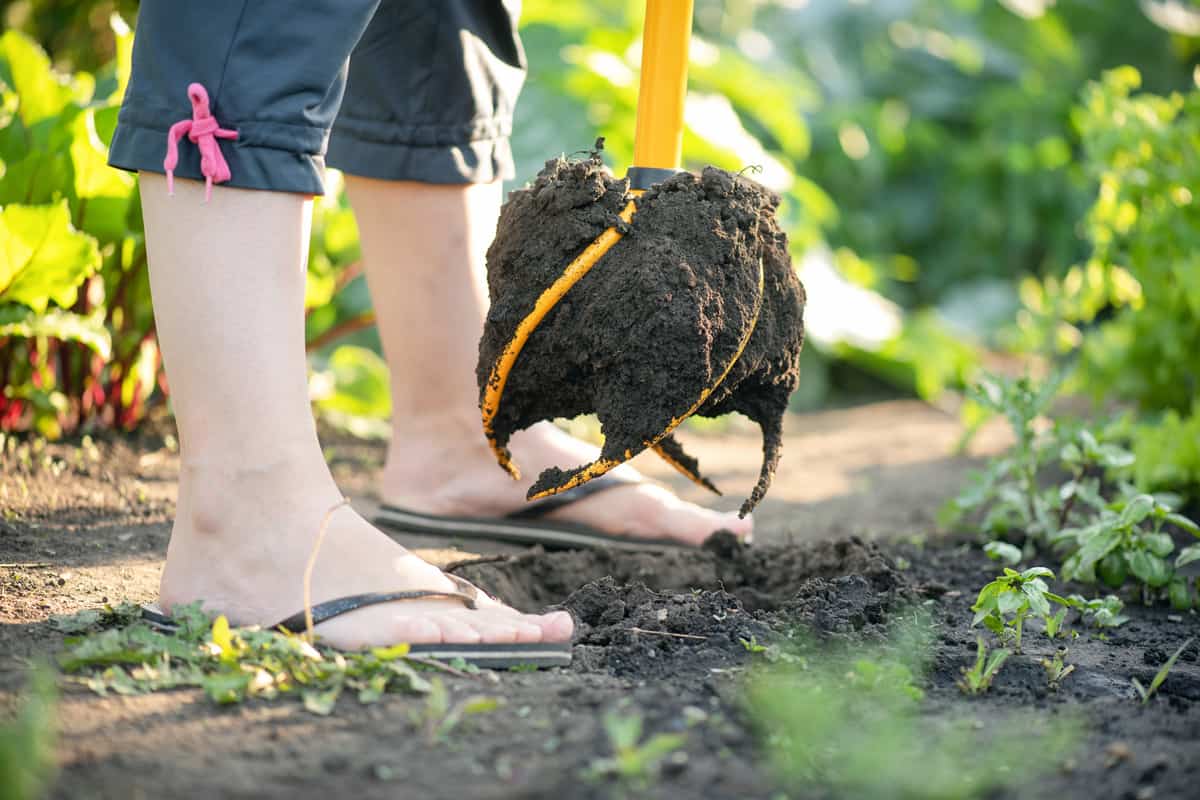
Whether or not you choose a manual or electric cultivator is entirely up to you. A manual ratchet cultivator may suffice if you only have small spaces, but larger soil areas can be a chore to do manually. Consider your budget and how often you will need to cultivate.
Wrapping Things Up
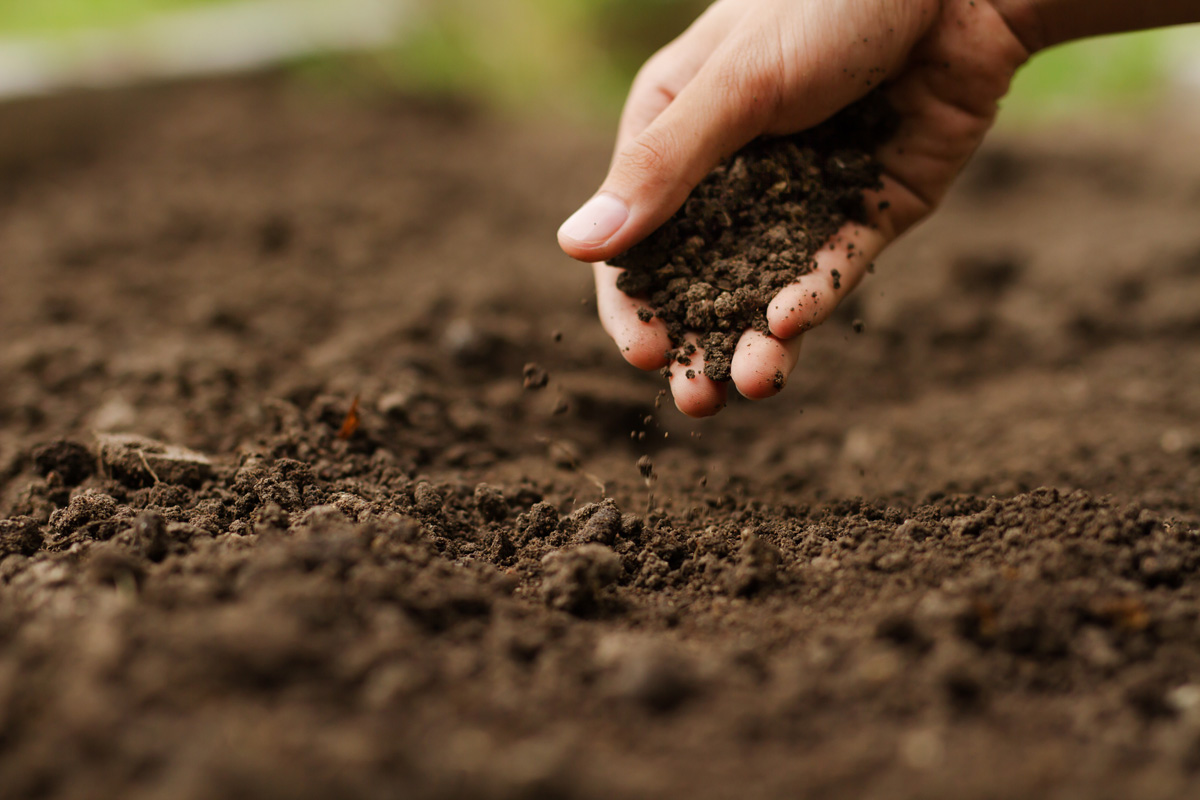
Using a ratchet garden cultivator, particularly a manual one, is relatively straightforward. Press the tines into the soil and twist up the dirt. You can even use your cultivator to pull out stubborn weeds and debris to clean up your garden plot.
Take care not to use garden cultivators on hard or untilled soil. Also, avoid cultivating over rocks. This could damage your cultivator and will not yield practical results.
Manual garden cultivators work best for smaller plots of land and plant pots. Electric cultivators are also on the market, so you do have options for whichever one best suits your needs.
If you found this post helpful, check out our other articles below!
What Is The Best Garden Cultivator [Inc? Battery, Electric, And Gas]?


